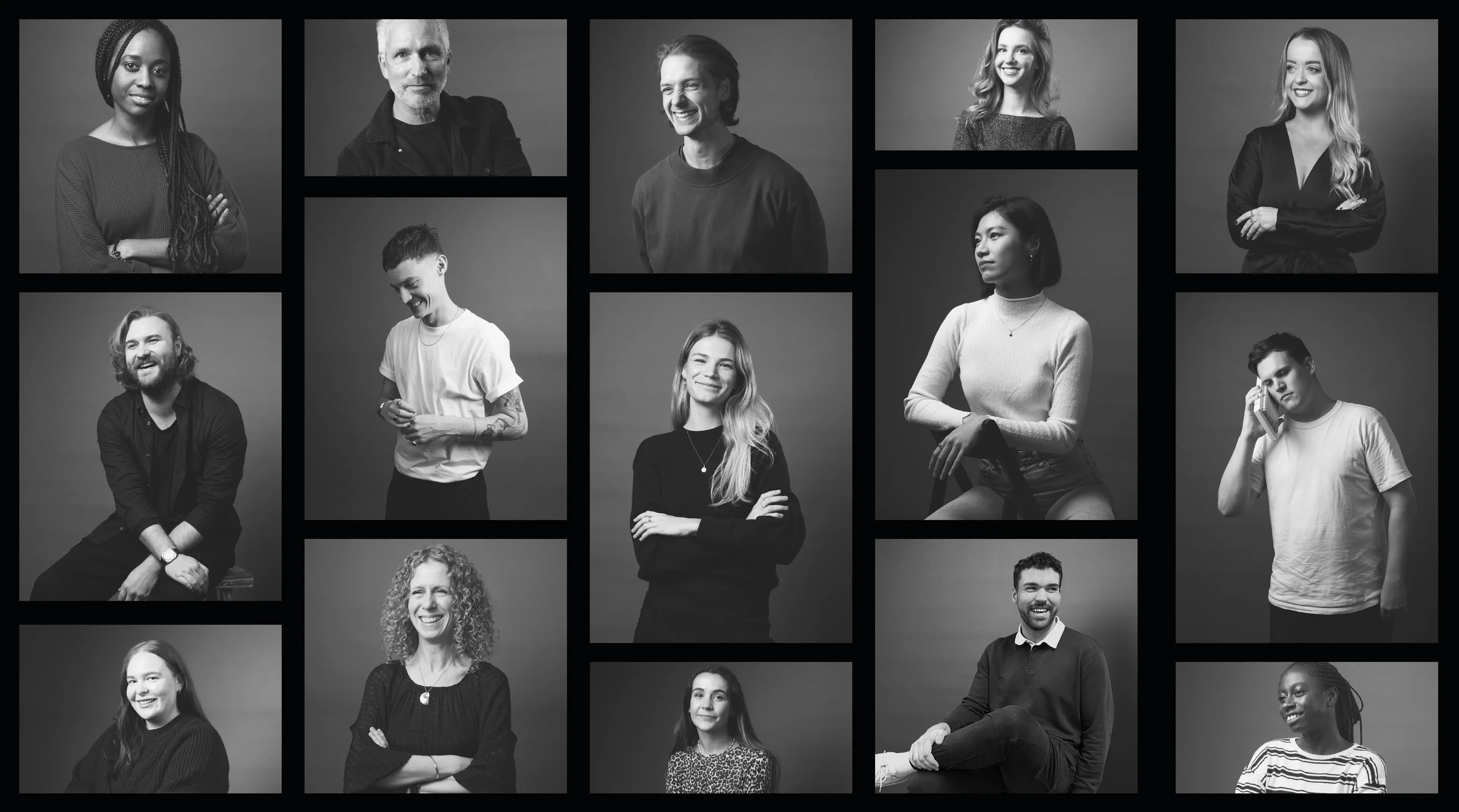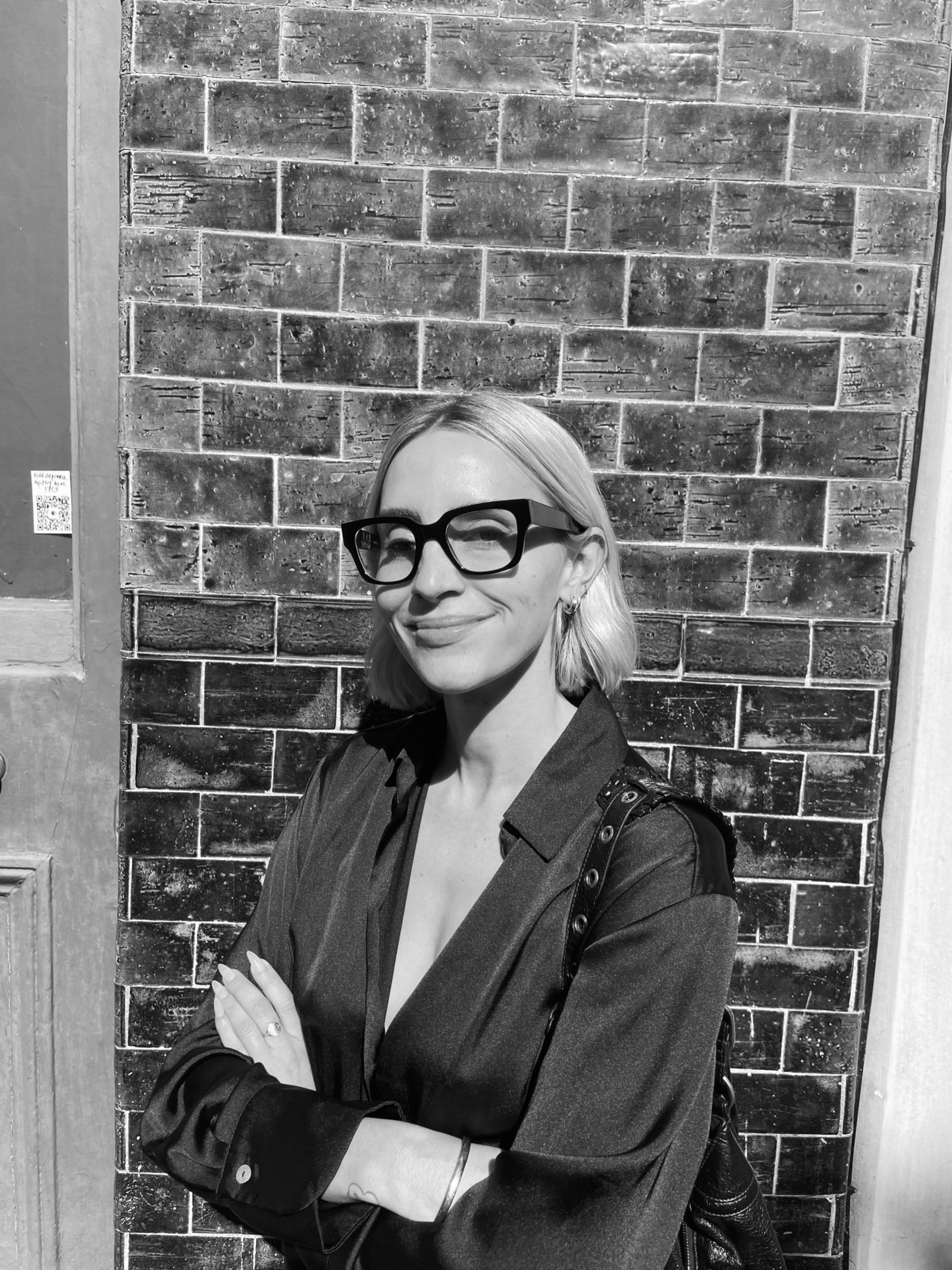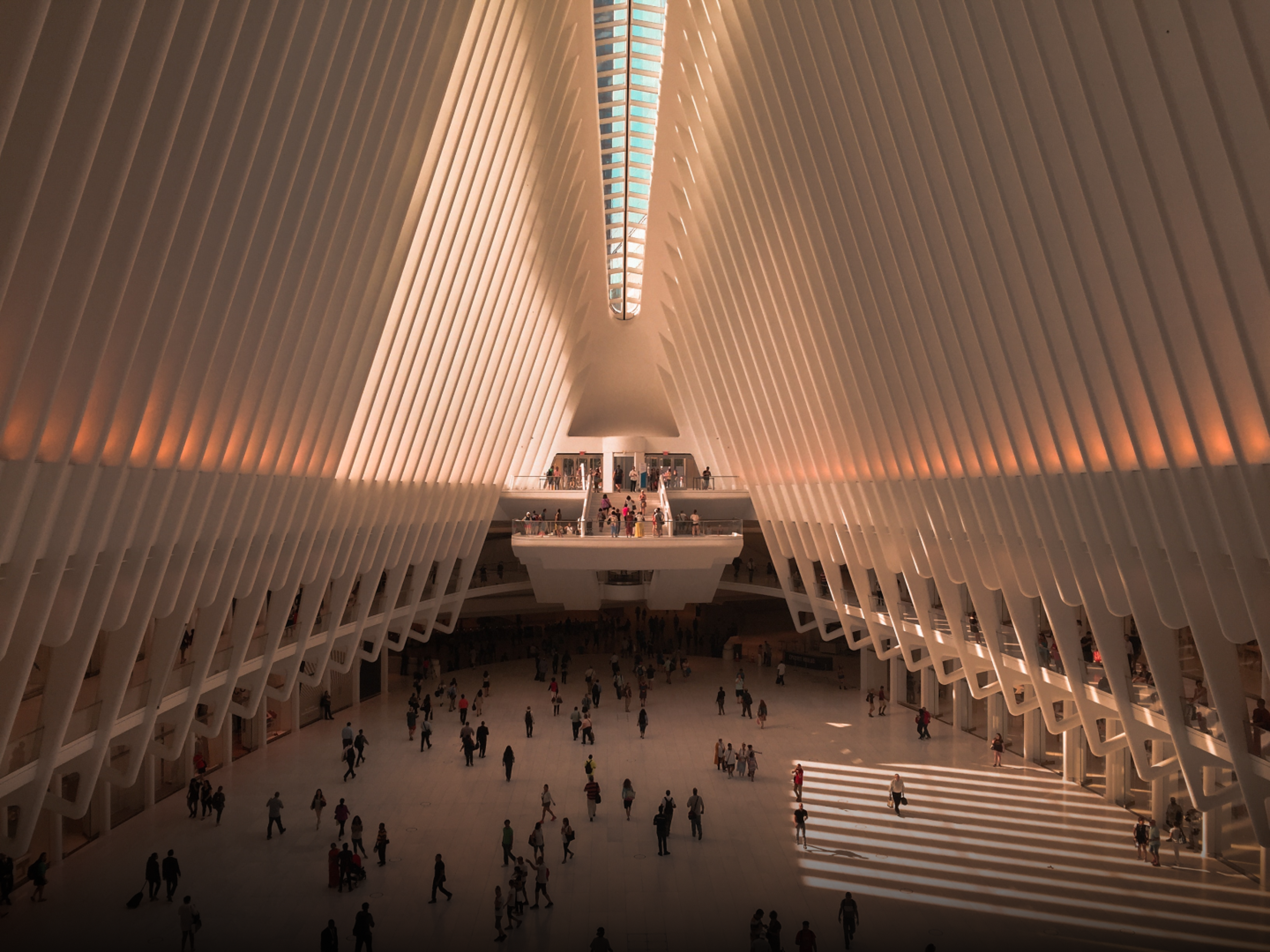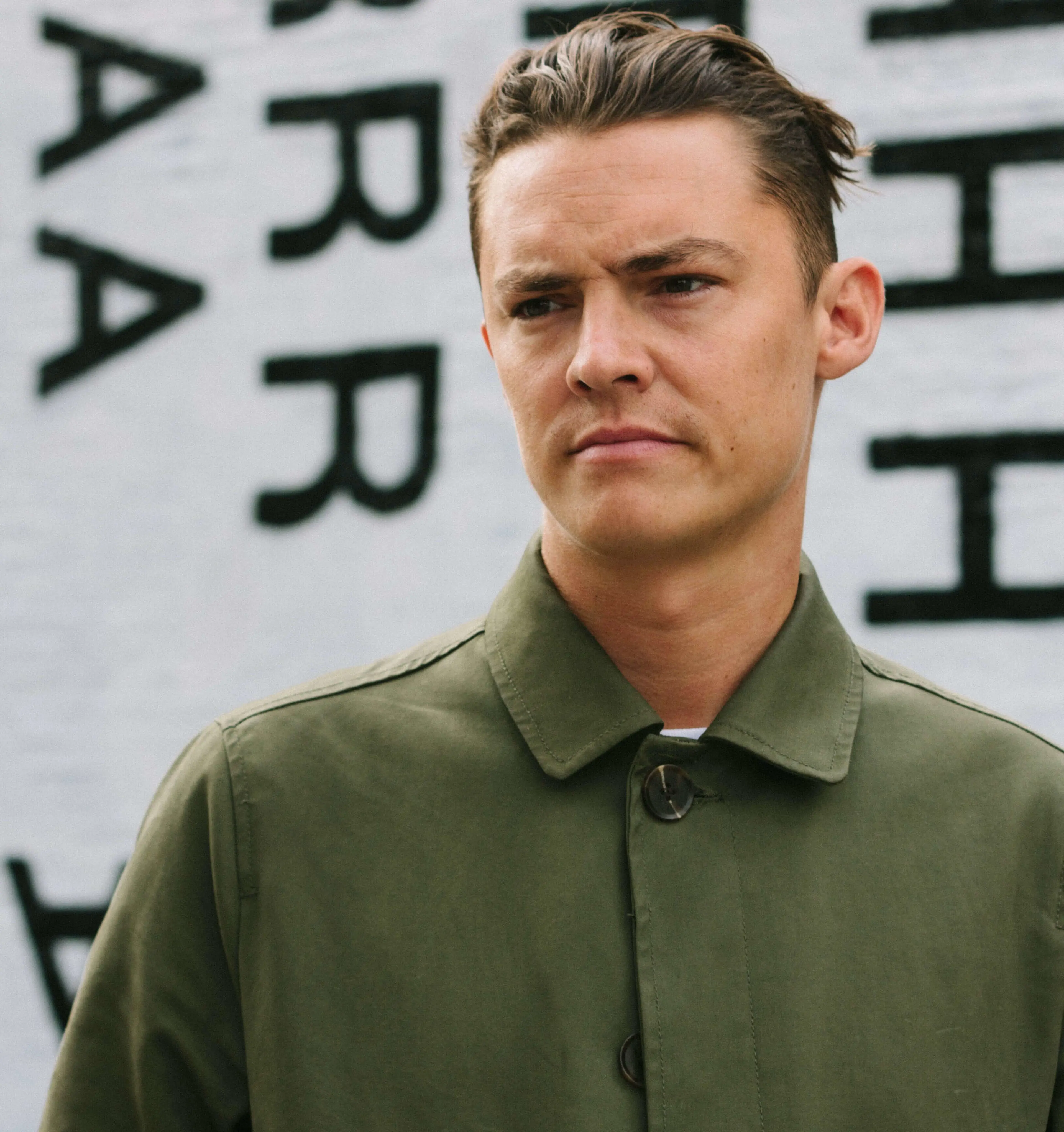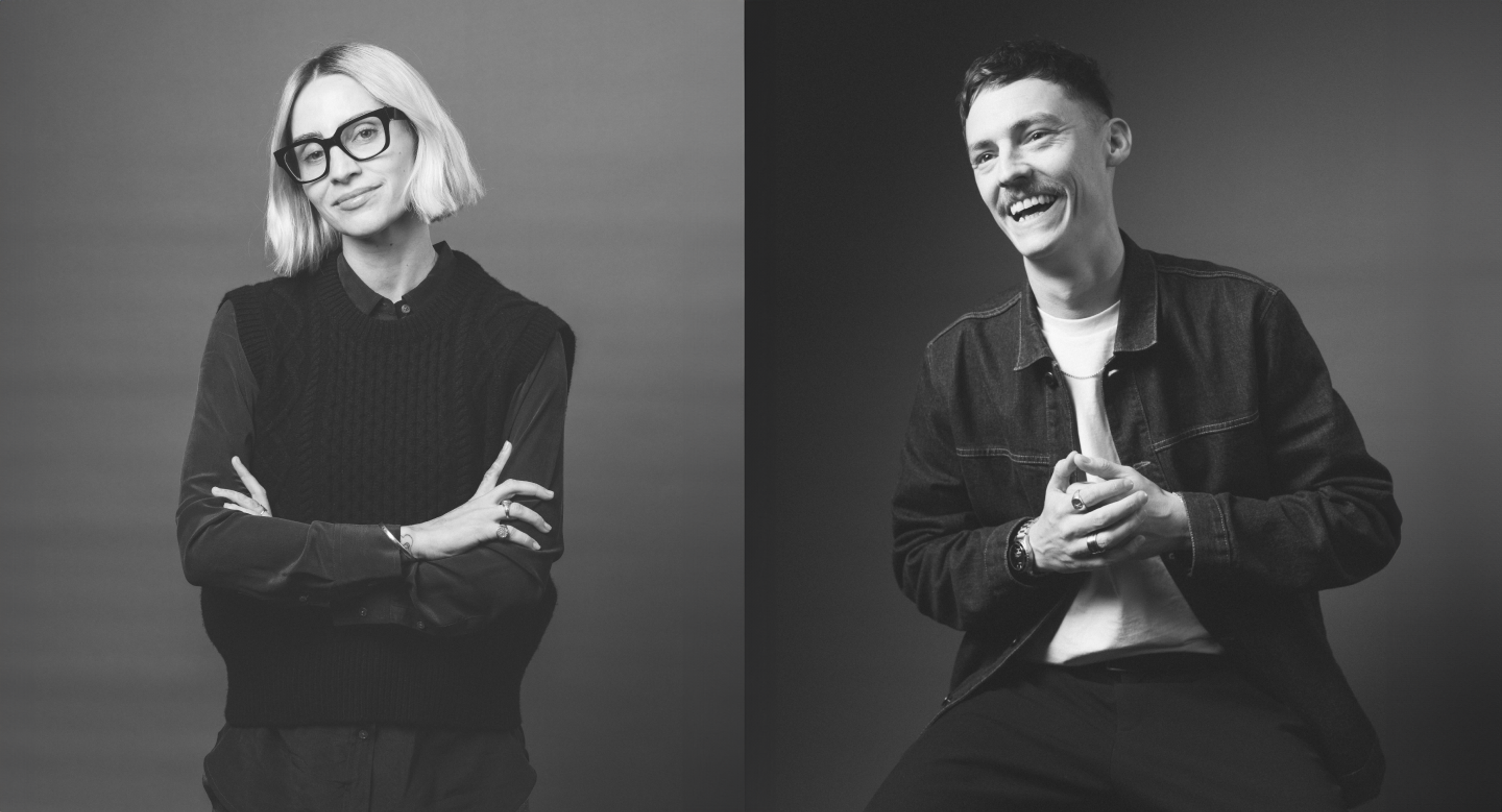
Design
1 Jun 2024
7 Min Read
Talking Timeless Design: In Conversation with Marcus Dunford & Nicole Du Toit
Interviewing Matter Of Form's creative director duo, Marcus Dunford & Nicole Du Toit, for their take on everything from design principles to storytelling, topped off with pearls of wisdom from the award-winning directors.
More often than not, creativity is an individual pursuit. But for Matter Of Form Design Directors Marcus Dunford & Nicole Du Toit, collaboration sits at the core of what they do.
Dunford is a problem-solver. Just instead of words and numbers, his work employs visuals and behaviour to produce desired outcomes, drive value and create globally recognised work, not only for its quality but for the change it drives for people and markets. Du Toit is Matter Of Form's brand guardian, with a drive that stems from an unwavering commitment to craft and visual cohesion, alongside the thrill, freedom and challenge symbolic of being creative daily. Partners in design, each of them possess an effortless kind of style that resonates with clients, just as much as their team.
Backdropped by shelves of striking designs and framed photographs indicative of the energy and culture innate to the MOF studio, the creative duo shine a light on their collective craft, the nuances of art, beauty and taste and whether a design can truly be considered timeless.
Is there such a thing as timeless design?
Marcus Dunford: It's so subjective. The thing with design, and we always talk about this, is it has a low barrier to entry. Everyone consumes design, so therefore everyone thinks of themselves as having the expertise to comment on design. We consume things, we buy things, we interact with things that we like. Now, when you say something is timeless, if you ask different people, you'd undeniably get different answers.
We might sit here and designate 'timeless' on certain movements. I know that both Nicole and I like Swiss-style design. I would say that's timeless because it's in absence of any clutter. It's all about clean, considered typographic balance, allowing relationships to breathe. It's not about maximalism. And so with that, the style doesn't contain many elements that can quickly fall out of favour. But there are also people who probably find Swiss design or any type of minimalism slightly stark and even boring.
When you look at the world now – full of hyper-stimulation – people can quickly go from feeling overwhelmed and yet familiar to something that potentially feels stark, boring, and unfamiliar, as much as it still gives a lot of room from a functional standpoint, like giving elements space to breathe, et cetera. So it's a hard one to answer. I do think that certain styles, designs, aesthetics – whatever we choose to call them – are a little bit more timeless than others.
Nicole Du Toit: I think it's difficult to define something as timeless in design because, as with most art movements or design movements or stylistic movements, the pendulum just keeps swinging back and forth, back and forth, back and forth. Form follows function in Bauhaus, for instance – a very informed design movement, all stripped back and simple. Then all of a sudden everyone was using Helvetica, and now Helvetica is almost as taboo to use as perhaps as...
MD: Comic Sans.
NDT: Yes! If we're talking about typography, the pendulum is now swinging towards something that feels a little bit more crafted and considered; a little bit more maximalist. In terms of branding and logos, we've moved away from just a wordmark on its own where the style is sleek, clean and contemporary. Or was contemporary. Now people want something that feels a bit more crafted, bespoke and unique. At the same time, it's difficult to say in finite terms because as soon as this current preference for detail becomes "too much" or if it's overdone the pendulum will swing back again. We're seeing this huge 90s fashion revival now, I wouldn't be surprised if, in ten years, skinny jeans are suddenly back in.
MD: Some people continue to rock them now...
NDT: To talk about timeless design you could perhaps look at certain logos – Coca-Cola's has certainly stood the test of time. That mark will forever be something that's looked at as quite beautiful and iconic. If that's the brand association with it that's doing the legwork there, then fine. Another I and so many consider timeless is Loewe's – their 'Anagram' was designed in the 1970s – rooted in the branding irons used to mark cattle, a nod to their traditional leatherwork – and it's one of the most beautiful things that we continue to reference today.
MD: Fashion brands are often what pops into people's heads when we talk about timeless design in the luxury sector specifically. Chanel, again, a timeless logo that doesn't need to change. To Nicole's point, is the brand doing a lot of the legwork? Is it the association that makes it timeless? It's such a fine balance to strike.
It makes me think of layers, because you think of design as this singular thing you're consuming. But in the case of a brand association or perception doing the legwork, that's just one facet. You've got type, colour, application. When you move into application it splits out even further.
If you had to pin down a definition, how would you?
NDT: If we had to point to some general principles behind what makes a design – or anything, really – timeless, I would start with is it fit for purpose? It needs to work. That's not groundbreaking but it's easily forgotten in favour of getting caught up in aesthetics. Brand design is essentially visual metaphors, which must convey clarity.
Secondly, does it have a good hook? Marcus always asks "what's the hook?" three times over, which is always the question we go back to to make something more interesting or differentiated from the generic. I'd then go for attention to detail. Even if it's the most minimalist Swiss design, there must be an absolute attention to detail. And then finally, exquisite craft. The care and investment that goes into a design is so palpable, and that is something I believe feeds longevity in a huge way.
MOF: Would you agree with those Marcus?
MD: Absolutely. They transcend design practitioner. You can say the same for UX, you can say it for UI and you can say the same for brand.
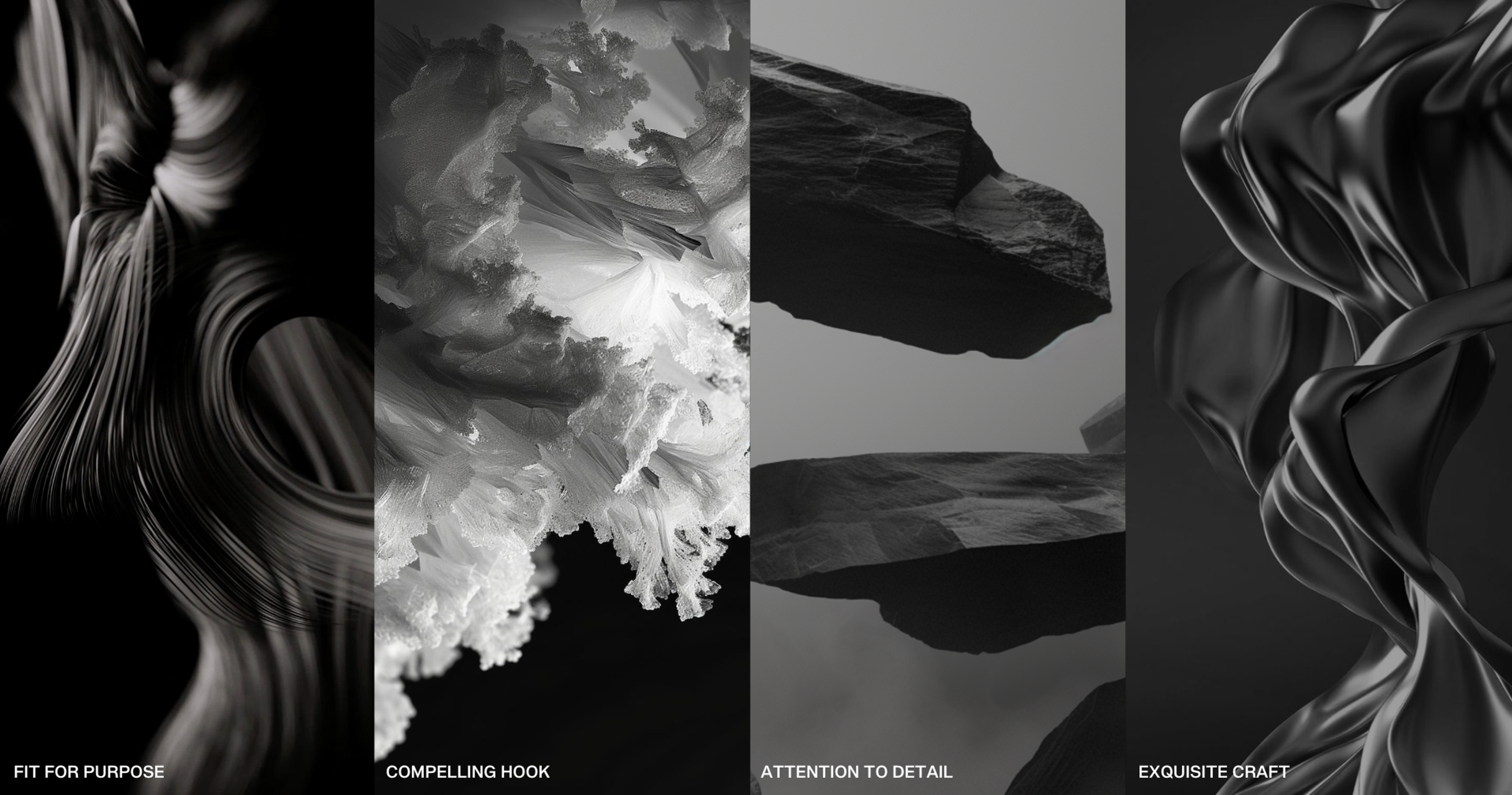
Let's talk about taste, which is often – perhaps misguidedly – considered synonymous with luxury. Is that an association you come up against?
MD: It comes back to that low barrier of entry. Everyone feels that they can comment on the design. Not a lot of people feel that they can comment on the strategy. Why? Because the strategy is elevated to a higher level of consciousness – if you aren't ready to have an argument with someone who's going to be very good with words, you are more than likely going to stay in your lane. Obviously clients will and should push back if the work contradicts some core value, but otherwise you're often wowed by the language of it. With design, one person claims to not like the type, layout or even overall look and suddenly, if we go back to Nicole's principles of timeless design, those are quickly forgotten and then we have to contend with confirmation bias, which can escalate just as quickly.
Occasionally, it's the case that our team has designed a digital experience, say, with their team and we collectively think it's great. However, once presented to the CEO, it turns out their view is completely different to their teams but with a higher authority. That view naturally cascades down and the design needs to change. Annoying is probably the word many designers would use but it's also a necessary evil. We do need that counterbalance – you need a suit to balance the creative. We aren't living in a world where we're designing for creatives, as much as I would love that. Because again, we are just as fraught with confirmation bias as everyone else.
NDT: I think we can often get caught up in our own role. In our heads, we've got clear design links. This shade of red conveys X, or a parallax in this instance gives the design Y. But sometimes you need people to give a more realistic gut check, feedback from people that don't exist in the creative world 24/7. Telling us whether something is fit for purpose and so on.
Coming back to taste, I think it's exactly as Marcus says. So many people will throw opinions at whatever we do because it's such a low barrier to entry. Who's to say that this specific shade of red, and here I go again with the red analogy, but who's to say that the shade I've selected is the best fit? That shade might be the colour of a client's Premier League rivals or a colour a particularly bad ex would frequently wear. There are so many connotations that can come from and therefore impact design, rationally or otherwise.
MD: There's also a reality in which a client's taste is most likely derived from a competitor's. They're basing their taste on what they're seeing other people doing, and they assume that then the That is the right taste. You end up in this domino effect of everyone making bad decisions based on someone else's bad decisions. That's especially prevalent when it comes to usability. Like, Oh, so and so did this. Or they've done an audit of their competitors, and they want you to design their website like that competitor. You're like, But you don't know if that's working, nor is that customer base exactly the same as yours. You don't know what their KPIs are, blah, blah, blah, blah. It's been formed again by a series of previously bad decisions. At what point do you break the cycle?
We've spoken about design layers – when someone doesn't possess an understanding of that relationship between components, instead clashing two disparate concepts together just because they like them individually, that's when we end up with this Frankenstein-esque result. Siloed thinking quickly creates bad design. I know naturally, creativity isn't bound by rules but there are certainly principles to it. Sometimes things jar and it works, but it takes a designer to know that.
MOF: Very much a case of knowing the rules before you break them.
MD: Exactly.
In your view, what's the difference between art and design, if any?
NDT: Art tends to be far more wrapped up in the artist than design is with the designer. Art is also about the cathartic experience someone has when they see a piece, and they'll undoubtedly have a highly personal interpretation of it and its meaning. Design is still about people, and communicating something visually but it's in response to something – usually a brief, right? Design needs a common goal, an outcome; it needs to serve a purpose, whereas art doesn't necessarily.
MD: It's like anything of beauty. One person will find a work breathtaking while another may find it dull. Those takes won't affect anything apart from maybe the artist themselves who will likely be indifferent as it's their expression regardless.
How important is context, process and story in design?
NDT: There's this widespread assumption that design boils down to what looks good. That's a reductive way of thinking, even for those who know nothing about design. Design is about conveying something – a message, a feeling. People rarely remember facts but they remember stories. Good design tells them.
In our work, it's good to bring clients through the journey. Obviously you leave some parts out, the process can be long and arduous – creativity is hardly linear – but it's about making them a part of the process and in turn the outcome. It's like building this crescendo for them, and for ourselves in part. Marcus will agree because he loves the process.
MD: 100%. I think without offering the context and rationale behind a design, you give the client more room to disagree because you aren't making those mental links for them. That's on us to do. They need to understand why we've chosen that element and they genuinely want to know. The end user? Perhaps not. Someone who likes Coke perhaps doesn't buy it for the branding as much as they buy it for the taste. Does the average person care when Burberry changes its logo? I'm not sure but I'm certain that heightened application and brand interactions can be the tipping point between conversion or idleness.
NDT: That's such an important point. The importance of things like process and story around design specifically depends on an individual's stake in the thing you're creating. Owners of a brand care, they have a vested interest, but I think plenty of people who wear or use certain brands do so based on the product, at least first and foremost.
What's your first move when you receive an initial brief?
NDT: I tend to do a lot of writing in at the start of any brand project, whether we have an established brand strategy or not. Rapid fire writing, stream of consciousness, I find it's the best way to start anything. It's an incredibly personal process though, I don't really impose ways of working on the designers because every creative has their own thing, at least in that front sketch stage. But for me, doing the writing, the sketching, putting pen to paper upfront, before any research or looking at other references et cetera, that's when I can come up with a unique angle on a brief before my thoughts are influenced by things that I might see in the world or by my own internal biases. Bias will play a part regardless but often speed means I can bypass some of them.
MD: I have to formulate my thinking. The reason being a creative's brain – or mine at least – is a sea of ideas firing around. Being dyslexic and having quite a short attention span too means it can become quite chaotic for me quite quickly. But when you have a limited amount of time or a limited amount of budget to work with, you need to put in place certain guardrails that allow you to get to a potential answer a little bit quicker. That might be a set of processes. I don't necessarily reach for a specific method every time. I will write things down but do I write it down in the same way for each brief? Not at all. I'll jump between sketchbook and screen. For me, it's about having a toolbox I can pull from depending on where I am in a project.
Give us your final pearl of wisdom.
NDT: In this day and age where everyone is worshipping at the church of AI, I'd caution designers to not fetishise the tool. It's about the person behind it, the designer, the creative. If you have to whip out pen and paper, do it. Or even – god forbid – a Word doc. It's less about the tool that got you there, it's your creative process and the final design that count. Focus on what you make and its meaning, not the machine.
MD: Creativity is fraught with contradictions. We're told to be expressive without limits but often truly out-of-the-box ideas are dismissed immediately. As a designer, only time is going to help you find that harmony, that meticulous balance between your creativity and your guardrails. But they're yours to find, and that's the fun part.
Living by the outcome, not the hour, both Marcus and Nicole embody Matter Of Form's love for timeless craft, spirit of adventure and commitment to shared success. Together they lead a team of creatives who care deeply about making lasting change for their clients, across brand, digital and CX.
Join the likes of Accor, Aman, Virgin Galactic, Zaha Hadid Architects, Nespresso, Dr. Martens, Dorchester Collection and more who are designing what's next with our team. You can get in touch with one of our consultants via [email protected].
Design
